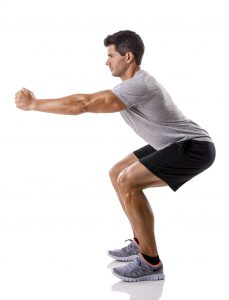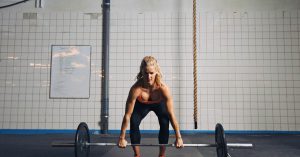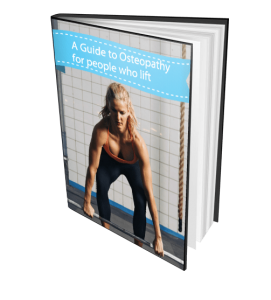Part 1 – squats and deadlifts
When it comes to resistance training there are 5 kings of exercise
- Squats
- Deadlifts
- Bench press
- Chin up
- Shoulder press
These are your basic resistance exercises which progress from beginner though to advanced. Each one done properly will give you strength and conditioning in the targeted area.
As an Osteopath I treat people with training injuries on a daily basis. I have a background in exercise prescription and rehabilitation. I have treated beginners, professional athletes, triathletes, crossfit and functional training junkies. No matter what the level certain injuries crop up time-and-time again. Certain exercises like squats and deadlifts when not done properly are common culprits.
This article will give you a greater understanding of squats and deadlifts. It will give you important tips on how to remain injury free. It’s one thing to read about form and technique, but to do it and feel it, is often quite difficult. You should have a health professional or a qualified trainer, guide you through the exercise.
It’s also important to remember not every person is the same. There are many people I have treated who just should not do standard squats or deadlifts. It doesn’t mean they can’t train, it means they may need to modify the exercise. In some cases it just means assessing treating an individuals biomechanical dysfunction or prescribing stretches etc. These things can help them perform these exercises without causing injury. Without knowing it, some people are ‘ripe’ to injure themselves with these exercises due to pre-existing conditions or previous injuries. An assessment of your body can help to identify this pretty quickly and work towards a solution.
Check out our article on how to keep your fitness goals when injured
Squats
We all know movement and exercise helps to keep us fit and healthy and keep pain and injury at bay. When done correctly, simple squats are a great exercise for most people. If done incorrectly, they can have the potential to cause or provoke injury which we have seen many times!
For most fit and healthy people, squats are a great all-round exercise. Squats can work many major muscle groups including your core muscles and generally benefit a lot of people. You don’t have to be young, super fit or already have strength to do them. They can pretty much be done anywhere without too much fancy equipment.
So what are the benefits of doing squats?
SQUATS CAN STRENGTHEN AND TONE YOUR LEGS
Squats use your quadriceps, hamstrings, calf muscles, which helps to tone and strengthen the legs. Moving slowly through the squat can make it a much more intense and effective exercise.
SQUATS CAN GIVE YOU A BETTER BUTT (AND WHO DOESN’T WANT THAT!)
Doing squats gives the glutes a good workout, helping to strengthen and tighten your glute muscles.
SQUATS CAN GIVE YOU A TOTAL BODY WORKOUT
Doing squats with weights in your hands will engage the muscles of the upper body giving you a full body workout in one exercise.
SQUATS CAN STRENGTHEN YOUR CORE
When done correctly, squats can engage your core muscles. Abdominal and back muscles are needed to keep balance during the movement.
SQUATS CAN IMPROVE YOUR BALANCE AND CO-ORDINATION
By strengthening muscles and core muscle activation, you may wobble at first …. but the more you practice the better you’ll get
SQUATS CAN INCREASE AND MAINTAIN BONE DENSITY
weight bearing exercises are excellent and increasing and maintaining bone density
INCREASES FLEXIBILITY
When done properly, squats increases joint flexibility in the ankles, knees, hips and lower back are all being used.
SOME PEOPLE ARE NOT WELL SUITED TO THIS EXERCISE
Generally squats work legs, glutes and back. People with history of disc bulges, back injuries or have a biomechanical dysfunction in this area can be setting themselves up for injury when doing this exercise. Even if they have good technique, some people are at a mechanical disadvantage. Previous or ongoing ankle and knee injuries can also become problematic. Most people should be assessed to make sure that the exercise is actually suitable for them. Some people (few) simply should not do them at all. Some might just need some ‘tuning-up’ of their body or biomechanics so that they can do them without provoking injury. While others will need a health professional, like an Osteopath, to help design a modified or alternate exercise that will yield the results without the injury. Each person and each body is unique and individual
SO WHAT ARE THE TIPS FOR DOING A PERFECT SQUAT SO I DON’T HURT MYSELF?
It’s especially important to maintain good technique doing squats especially when using weights. Always follow the steps below. Ask your Osteopath if squats are something that you may benefit from. Ask them to go through the movement with you to make sure you are doing them correctly. Seek their advice on if, when and how much weight to add to doing squats to get the best outcomes for you. Doing squats in-front of a mirror can be especially useful to keep and eye on your technique.
Here are the basic tips for good squats.
- Stand with your feet hip width apart.
- Tighten and engage your abdominal muscles.
- Lower your body dropping your bottom and bending your knees as if you were going to sit in a chair. Keep the motion slow and steady.
- Stop when your legs are parallel with the ground.
- Stay in this position for a few seconds.
- Now slowly press back up keeping your feet flat on the floor.
- Repeat the exercise for a total of 2 to 3 sets of 8 to 12 reps.
- Be sure to rest for 60 to 90 seconds between sets.
Once you have good form doing squats (with no shaky wobble), you can increase the difficulty and effectiveness of the exercise by doing it with weights.
Weights in each hand at shoulder level or use a bar across your shoulders, (‘smith machine’). You can also just hold one weight (with both hands) or a medicine ball in front of you while you do the squat.
OK so on to deadlifts!
Poor performance on a deadlift with weights can seriously hurt your back! Deadlifts work legs, back and abs. Again there are some people who are just not well suited to this exercise. Some people really need assessment of their back to determine the safest way to train to achieve the results that they are after
Deadlifts are done by pulling the weight off of the floor and then standing with your legs straight and your shoulders back. Its important to keep your back straight during this exercise. Keeping you back straight helps to avoid excessive load coming through the spine.
When you lift the idea is to “sit back”, keeping your butt low towards the floor and push from your heels through your legs. When you are bringing the weight back down the idea is to keep your thighs parallel to the floor and your knees over your feet.
How to do them
- Stand with feet slightly wider than shoulder-width apart, toes pointing straight ahead. Use no weight on the bar until you have the form perfect.
- With knees slightly bent and hands holding the bar outside of legs, bend forward from hips. (not your back – keep this straight or flat
- Breath in
- Keeping the bar close to the body, breath out as you push through your legs straightening them. Make sure you push through the heels and not your toes
- Bring the weight up past knees and straighten the hips while squeezing your glutes. Your pelvis should be in a neutral position (ie not tipping forward or back)
- Keeping your back straight slowly bend forward from the hips.Allow your knees to bend a little at the same time and lower the bar back to the ground.
7 Keep your core abdominal muscles engaged throughout the exercise to protect your spine
Common mistakes
Too much weight.
Often if the weight is too heavy you will ‘round’ your back and this is the danger zone where you are really prone to a serious injury
Doing too much with arms
Strength should be coming from your legs not lifting with your arms. Push hard through your legs to lift the weight. Shoulders and hips should be moving together. If not you can be using your lower back too much and risking injury
Feet not staying flat on the floor.
Again too much weight and bad form will set you up for a lower back injury.
Looking up and straining your neck
Try to keep your spine all the way through as neutral as possible
Jerky movements
Smooth movement up and down is important. Jerky movement probably means you are lifting more weight than your can handle and you need to drop it back a bit before you injure yourself
Even the most experienced lifters have probably been here. Many people underestimate how long it takes to progress to the next level and increase weight. Speed of progression will slow with more weight added. Form and core strength become more and more important. This is particularly dangerous when getting into heavy weights which will be very unforgiving.
Both exercises will give you big returns, but are both high risk if you are not suited to them or you don’t do them correctly. The more weight you lift the higher the return but the higher the risk. The heaver the weight the more every single element (technique, general strength to your own specific biomechanics) becomes important.
My Big, Fat Disclaimer
There is no way I can know if this applies to you and your specific situation. How could I? I don’t know who you are … what your medical history is … what you do…. squats or deadlifts … or how you use your body.
This post, therefore, is in NO WAY a substitute for thorough diagnosis and assessment by a qualified health professional.
If you’ve got pain then it’s my responsibility to recommend that you consult with a professional who is qualified to diagnose and treat pain … and someone, preferably, who knows and understands how you like to exercise and won’t just tell you to ‘stop it’ … especially when you might just be able to use it to get better!
For more information you may also like to check out our aticle on other common training injuries and how to avoid them
Want even more info? Download our guide to Osteopathy for people who lift here



